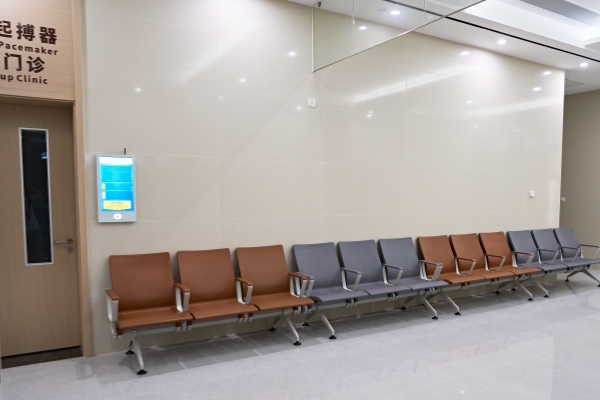In high-traffic venues like hospitals, airports, train stations, banks, and government offices, waiting chairs are almost essential infrastructure. For procurement managers, choosing waiting chairs is more than just buying a few chairs; it's a long-term investment that impacts the overall environment, its lifespan, and maintenance costs. In particular, scratch resistance, fire resistance, and easy cleaning often determine whether a waiting chair can truly meet the needs of frequent use. This article will comprehensively analyze several key factors to consider when purchasing waiting chairs for hospitals, airports, and office buildings, focusing on the purchasing characteristics of waiting chairs.
1. Scratch and Wear Resistance: The Key Guarantee of a Waiting Chair's Lifespan
Whether it's a hospital or airport waiting chair, it endures thousands of uses every day. If the surface lacks good scratch and wear resistance, it can easily develop scratches and paint peeling, affecting the overall appearance and image.
Purchasing Recommendations:
Preferably choose stainless steel waiting chairs or high-strength spray-coated steel frames, which offer a harder, more scratch-resistant surface.
For spaces that require both comfort and comfort, leather-covered waiting chairs can be selected. However, please ensure the leather is wear-resistant and meets scratch resistance testing standards.

II. Fire Safety: A Key Purchasing Criteria for Public Spaces
In public places like hospitals and airports, fire-resistant waiting chairs are a mandatory requirement. In the event of an accident, the flame retardancy of the furniture will directly impact personal safety and property damage.
Purchasing Tips:
Confirm that the waiting chair has passed fire rating certification (such as BS 5852, CA117, and other flame retardant standards).
For hospital waiting chairs, it is recommended to choose a chair covered in flame-retardant sponge, leather, or fabric for both safety and comfort.
For airport waiting chairs, all-metal construction or a fire-resistant coating are preferred, as they better meet international safety standards.
III. Easy Cleaning and Maintenance: The Key to Reducing Operating Costs
In high-traffic venues, waiting chairs require frequent cleaning. If the chairs are poorly designed or made of difficult-to-clean materials, the cleaning team will need significant manpower, increasing maintenance costs over the long term.
Purchasing Tips:
Hospital Waiting Chairs: Prefer materials with smooth surfaces and no unnecessary gaps, such as stainless steel or PU leather, for easy disinfection and cleaning.
Airport Waiting Chairs: Moderate seat spacing and a simple structure ensure quick access to cleaning tools.
IV. Structural Stability and Load-Bearing Capacity - Impact Safety and User Experience
A durable waiting chair must not only be comfortable for daily use but also withstand the weight of multiple people over a long period of time. Structural design and load-bearing capacity are often key considerations for B2B clients when purchasing.
Purchasing Tips:
Confirm whether the chair features a thickened steel or aluminum alloy frame.
Check whether the manufacturer provides a load-bearing test report, for example, whether a single seat can support over 150 kg.
For waiting chairs in hospitals, airports, and train stations, it is recommended to choose models with fixed mounting to prevent movement or damage due to heavy foot traffic.
In general, scratch resistance, fire resistance, and easy cleaning are three key criteria for choosing a waiting chair, but they are not the only ones. When purchasing hospital, airport, or office waiting chairs, purchasing personnel should consider a comprehensive evaluation of multiple factors, including load-bearing capacity, comfort, brand reputation, and after-sales service. Only in this way can they ensure safety and aesthetics while reducing long-term maintenance costs and achieving a cost-effective investment.